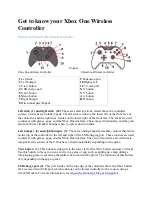
3.3 RP 210E/220E Remote Panel
The optional RP Remote Panels brings everything on the DCU to a remote location, with the
exact same user interface. It does not need any configuration, as it is reading the
configuration from the DCU.
As such, the RP can easily be retrofitted.
The RP also supports one IP-camera to be installed on the network.
3.4 Ethernet Switch
The Ethernet switch is not necessary if only one DCU 210E and one RP 210E is in use.
These can then be wired with an Ethernet cable directly.
It is recommended to make use of an Ethernet switch though, as it simplifies PC
configuration connection and future expansion to remote panels and/or camera interface.
3.5 Expansion
The basic system can be expanded with more input and output channels using the versatile
RIO units (
R
emote
I
/
O
).
Currently, there are RIO units for
● General I/O expansion, RIO 410 and RIO 210.
● Exhaust temperature monitoring, RIO 412
● Generator monitoring, RIO 425
● Load sharing, LSU 408
4 DCU 210E Engine Controller
4.1 First Power On
Use a Web-browser to set up and configure the DCU.
PC Connection/Setup:
● Connect via Ethernet using a net browser
● From the Address Field in the Browser, type the IP-Address. Factory Default is
192.168.0.101
.
● Then log in to the unit. Factory Default Username is ‘
DCU
’ and Factory Default
password is ‘
1234
’.
For further details and information, please see the Configuration Manual.
At the first Power-Up the user will be guided through a Setup Wizard
1. Language selection and your choice is valid through the rest of the
procedure.
Page 5 (20)






































